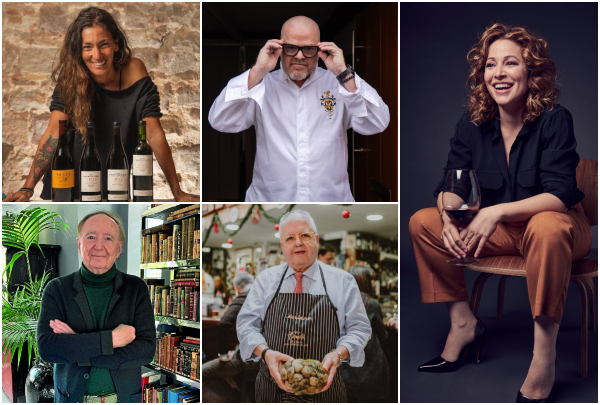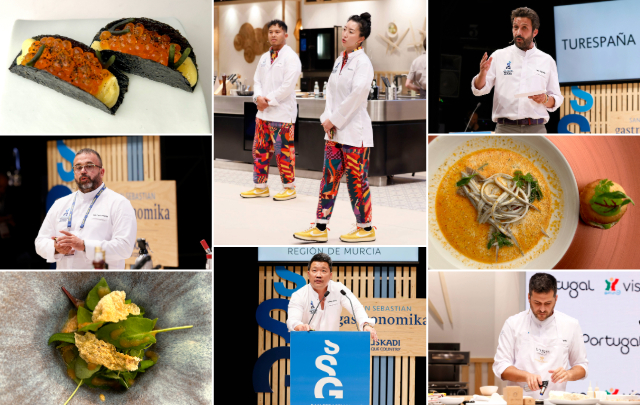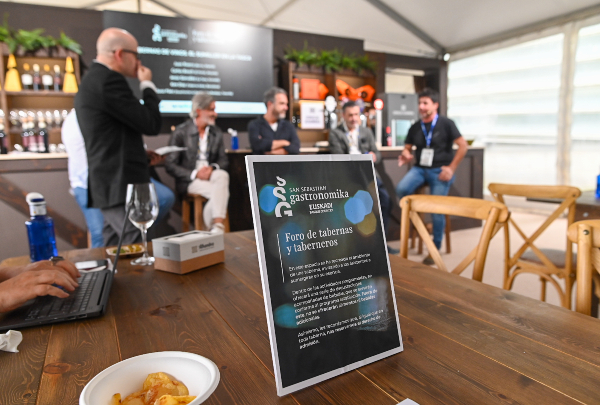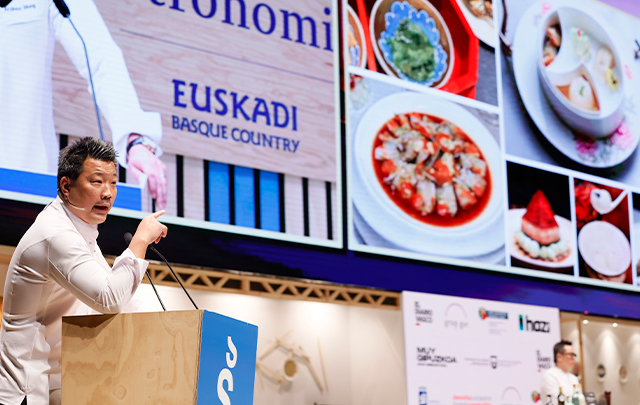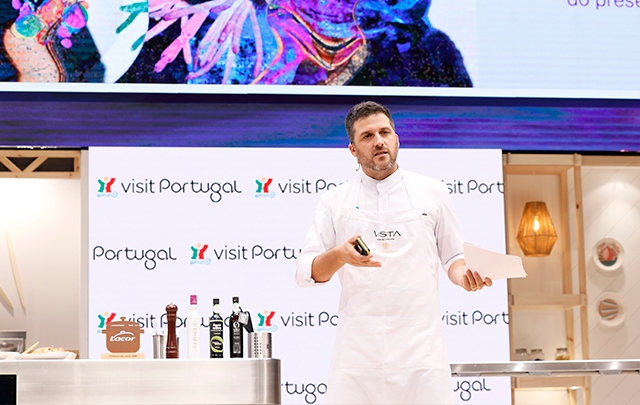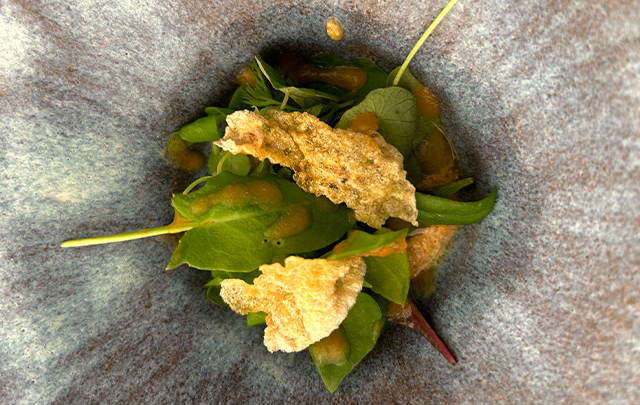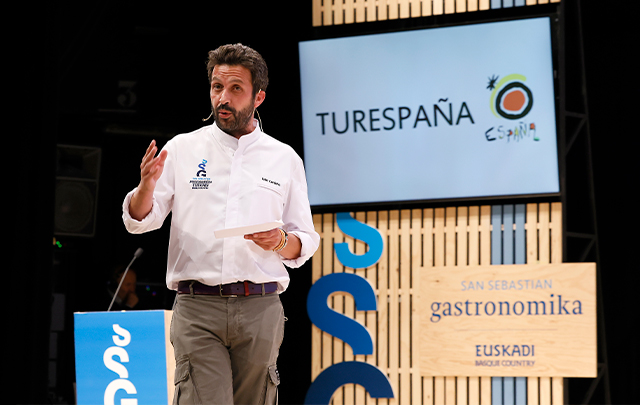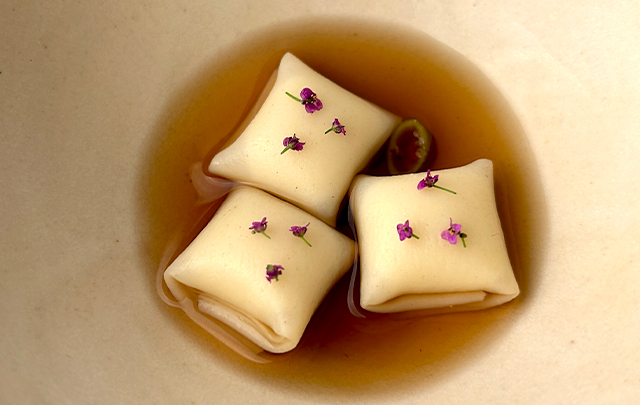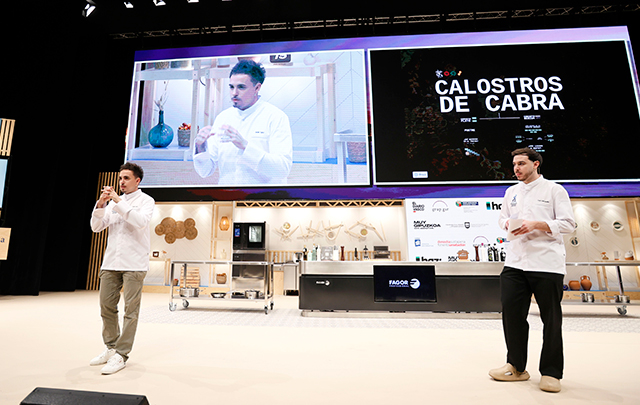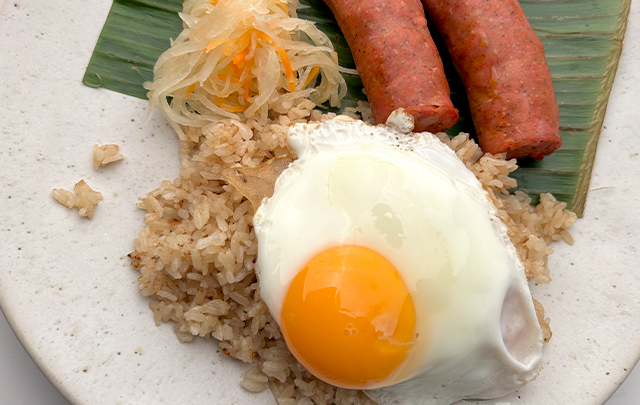News
Ricard Camarena beats artificial intelligence
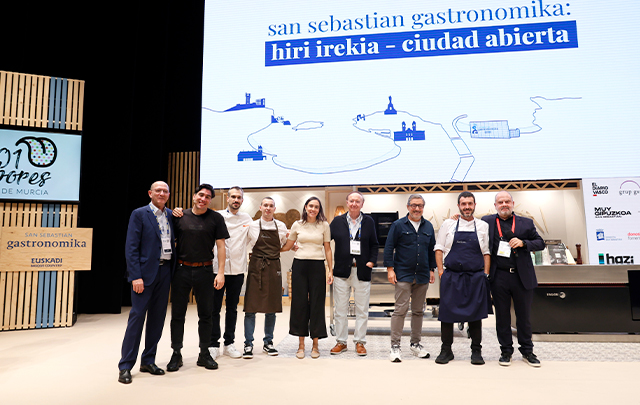
His first two dishes were rated higher by the judges than the AI-generated suggestions, while the desserts failed to impress in either case.
In this challenge, both teams had the same rules, ingredients and guidelines to create a three-course menu: a starter with five ingredients chosen by the public in the auditorium yesterday, a hake dish with two techniques, also decided by the congress participants, and a reformulation of a carrot cake.
Ricard Camarena and his team competed against artificial intelligence. Daniel Barrionuevo, chef of the Alícia Foundation, executed the score dictated by the AI; chemist Laia Badal and researcher and physicist Eneko Axpe asked the questions and gave the keys to this technology. Journalists Manuel Villanueva and José Carlos Capel and chef Joan Roca were the ones who evaluated each dish, without knowing who had prepared each recipe.
For the starter, both used the five ingredients chosen by the public. Tartar of figs and roasted chestnuts with slices of blowtorched tuna belly, fried and dehydrated potatoes and tuna and oyster jelly was Camarena's suggestion. The AI recipe was not too different: it has a base similar to the potato parmentier, with a release of figs, roasted chestnuts and vinegar, and a tartar with the tuna belly and oysters, seasoned with salt, pepper and the water from the oysters.
In the case of the hake, the AI has asked them to salt the hake for 20 minutes, dry it and roast it with piparras, Gernika peppers, idiazabal and lemon. A purely Basque recipe, without being asked," Axpe explained. For his part, Camarena cured the hake in anchovy salt, made a very soft sofrito, used a coffee oil, roasted the hake loin for half a minute and a kokotxa for four.
The desserts, these reinterpretations of carrot cake, were completely opposite: the AI proposed a carrot in textures with a boiled and pureed carrot cream, using only water until the desired texture was achieved; a classic carrot cake sponge, carrot liquefied gelatine and a classic butter cream, as well as carrot chips. Camarena reversed the concept, being more 'carrot' than 'cake', with a biscuit mousse, glazed carrots, drained yoghurt and coffee oil.
The jury
During the verdict, the members of the jury took the floor. The jury found that two of the first dishes, those prepared by the AI, 'lacked soul, although they were good'. The appetizers "could be passed over because the hake was overcooked," said Joan Roca. The desserts were not liked, either for their essence, the carrot cake, or for the results of both deconstructions. 'AI's looked like a carnival composition, but Ricard's lacked balance. Both failed,' said Capel.
One of the conclusions is that AI continues to show its limitations in haute cuisine, and that it also requires a certain amount of interpretation on the part of the person executing it. Axpe explained that this experience "was the bomb because it's something that's never been done before. We told the machine that it was a challenge against Ricard Camarena and the AI knows who he is, it guessed that it was for San Sebastian Gastronomika 2024 and even asked us about the jury and its origin'. Despite the defeat, Axpe's assessment is very positive: 'The AI has blown me away with these dishes. The fact that I can compete with Camarena seems brutal to me'.
Playing with new cooking techniques
A technique that does not require heat to cook and that produces new flavours and results, with speed, sustainability and organoleptic characteristics that have never been tested before. Julen Baz (Garena*, Dima, Bizkaia), security systems specialist Jon Sola and Eneko Axpe himself spoke about the fastest tool known to date.
The idea came from a statue Baz has in his farmhouse that had been struck by lightning, which made Axpe think it could be cooked with electric shocks. They tried cooking a sausage with electrodes, but it didn't work, so they switched to a griddle system, where the food is the element that closes the circuit. A prototype has already been tested with vegetables, fish and meat, and with the help of an Italian designer, Lucca Hugo, they have fine-tuned the first prototype, which has already been submitted to the patent office.
'The food closes the circuit, so it's important to know the resistance of each type of food to determine the voltage,' Axpe explains. 'We can make a one-kilo txuleta in ten seconds,' he added. One grilled hamburger is equivalent, in terms of CO2 emissions, to more than 4,500 burgers cooked with this system.

